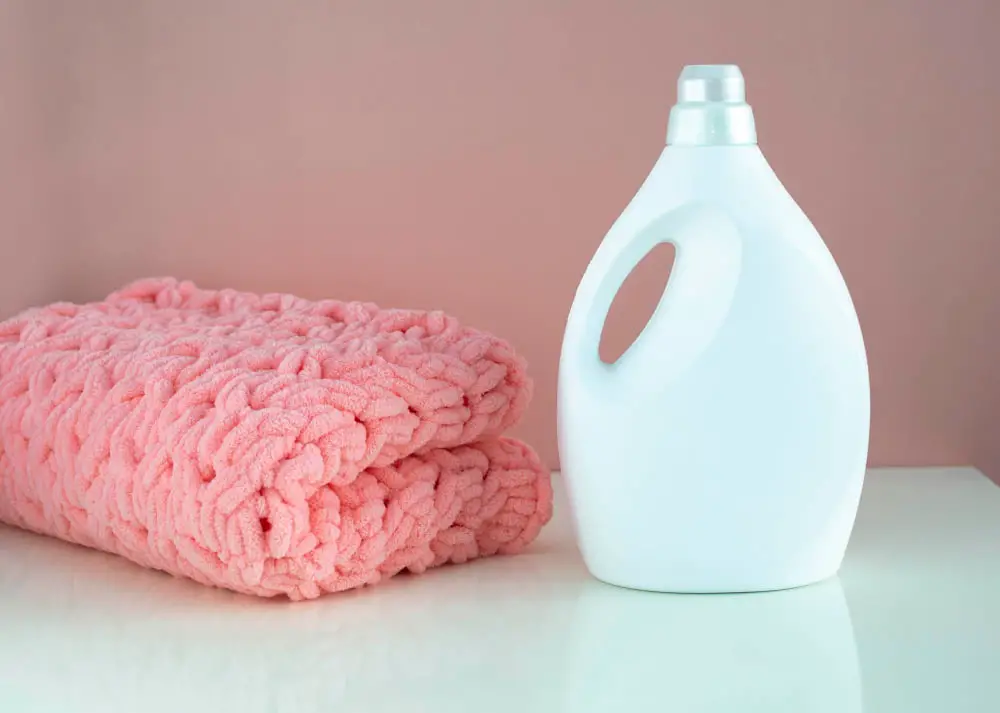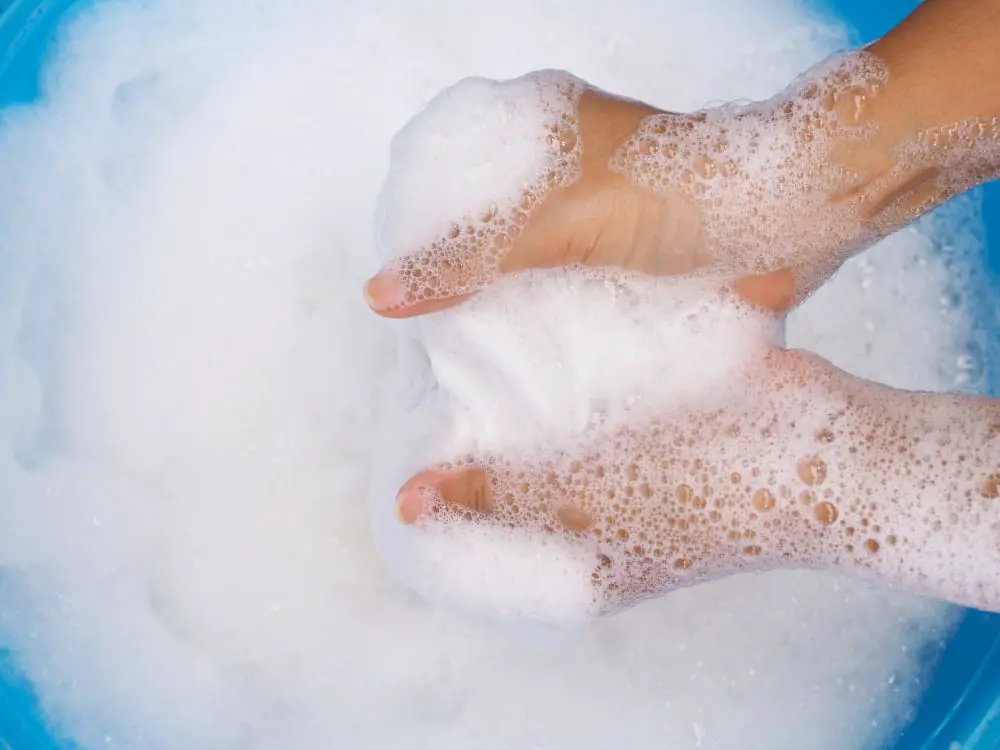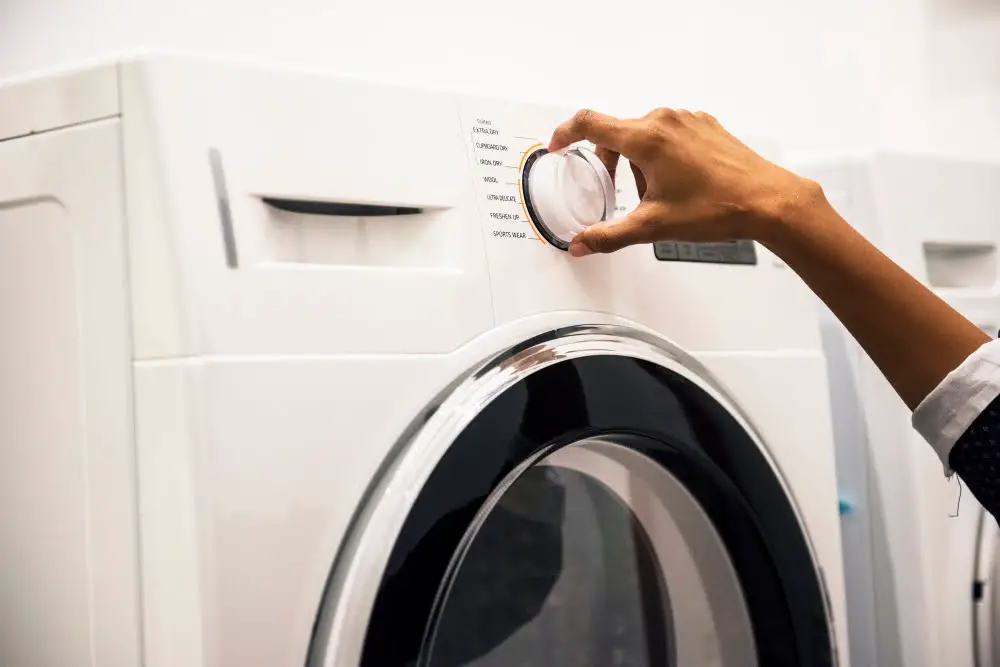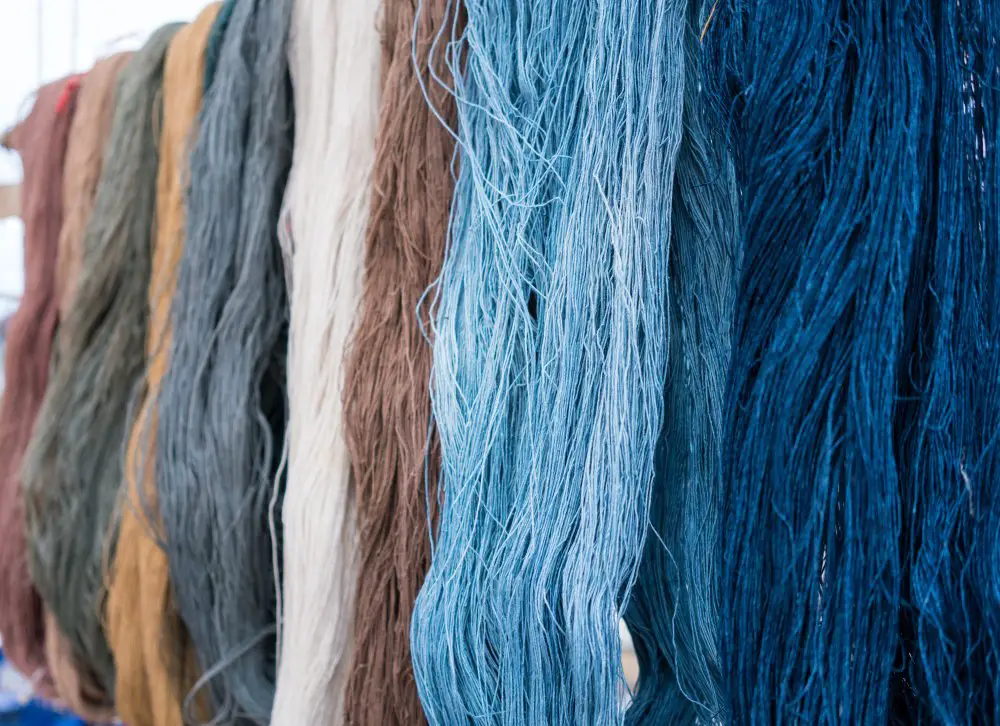Discover the ideal method of washing yarn to maintain its quality and longevity.
When it comes to maintaining the vibrancy and softness of your yarn crafts, proper cleaning methods are crucial. This article will guide you through the process of washing yarn, whether it’s a completed project or skeins that need a clean-up.
We’ll cover everything from identifying the yarn type, choosing the right detergent, to the actual washing and drying process. This comprehensive guide ensures your yarn stays as beautiful as the day you bought it.
So, let’s dive into the specifics of how to wash yarn correctly to preserve its quality and longevity.
Key takeaways:
- Use mild soap or detergent for washing yarn.
- Submerge yarn in lukewarm water, avoid extreme temperatures.
- Rinse yarn until water runs clear.
- Lay yarn flat to dry, avoid direct sunlight or heat sources.
- Consider alternatives to a lingerie bag for washing yarn.
Materials Needed to Wash Yarn

To ensure a thorough and safe cleaning process, several items will be necessary. A mild soap or detergent is the first requirement, preferably one without any harsh chemicals that could harm the fibers. Wool wash or baby shampoo are both excellent choices.
Next, you will need a sink or large bowl for soaking the yarn, large enough to fully submerge the skeins. Room-temperature water is ideal for this process as extreme temperatures can damage the yarn.
A colander or strainer can be very helpful for removing excess water post-soak, preventing oversaturation that could lead to the yarn losing shape or integrity.
Lastly, a flat surface covered with towels is needed for drying the yarn. Considering the size and amount of yarn to be washed, make sure the surface area is big enough. A spare bed or a clean floor are usually sufficient for this purpose, but a drying rack also works well.
Once these materials are at hand, the process can move swiftly and efficiently.
Should I Wash Yarn Before Crocheting or Knitting With It?

Washing yarn before crocheting or knitting with it offers several advantages that improve the finished product. Firstly, it helps to remove any excess dye from the yarn. This is particularly important when working with vibrant or darker shaded yarns, as the dye can sometimes bleed onto other yarns or even your hands as you’re working.
Secondly, washing your yarn before use can assist in setting the fibers, leading to a smoother and more comfortable end product. In addition, it allows yarns of different types or brands to become more uniform in texture and appearance, ensuring a seamless blend in your projects.
Lastly, going through the washing process can remove any dirt, dust, or potential allergens from the yarn – this is incredibly important if the end product is intended to be a gift or sold to a customer.
Most yarns are suitable for pre-washing, but it’s always wise to check the label for washing instructions, as some specialty or luxurious yarns may require a particular cleaning method or are labeled as ‘dry-clean only’.
Instructions On How to Wash Yarn

Begin by gathering all necessary materials: a mild detergent or shampoo, a large bowl or sink, and a towel. Make sure your workspace is clean and dry.
Fill your sink or bowl with lukewarm water, not exceeding 30°C, this temperature ensures the yarn fibers do not shrink or felt. Integrate a small amount of detergent or shampoo into the water.
Submerge the yarn in this solution, gently compressing it to ensure the soapy water penetrates through. Avoid vigorous agitation or wringing to prevent felting and tangling.
Let the yarn rest in the water-soap mix for up to 15 minutes, this step allows any dirt or grime to loosen. Post the rest period, drain the soapy solution, gently squeeze the yarn to remove excess soapy water, but do not wring.
Refill the sink with clean, lukewarm water for rinsing. Put the yarn back into the clean water, swish it gently to ensure soap residue washes away. Repeat as necessary until the water runs clear.
Remove the yarn from the final rinse, again, gently squeezing out excess water. Roll the yarn in a dry towel to soak up additional moisture. It’s essential not to twist or wring the yarn, as this can lead to stretching or distorting the fibers.
Lay out your yarn flat to dry; a mesh drying rack is preferable, facilitating airflow. Avoid direct sunlight or heat sources.
These steps provide a basic guide to washing and caring for your yarn, preserving its quality and life.
How to Machine Wash Yarn Skeins

Firstly, ensure your yarn is in hank form. If it’s still in a skein form, unwind it and tie it loosely in a couple of places to prevent tangling.
Before washing, you’ll need a mesh bag, like those used for delicates in laundry. Put the yarn into the mesh bag, zipper it up to assure none of the yarn slips out during agitation.
Set your washing machine to cold water on a delicate or hand-washable setting, and add a yarn-friendly, mild detergent to the wash. Using hot water or a harsh cleaning agent can cause the yarn to felt, entangle, and possibly shrink.
When the washing cycle is complete, do not use the spin cycle. The centrifugal force exerted can potentially damage your yarn. Instead, pick up the bag carefully to maintain the yarn’s integrity.
Rinse the yarn thoroughly, under cool running water to remove any leftover detergent. Again, place the rinsed yarn in a second mesh bag. Remember, never wring out the yarn or it may distort its shape and stretch it out, causing it to lose its elasticity.
To remove excess water from the rinsed yarn after washing and rinsing, lay it flat on a clean, dry towel, roll it up like a sushi roll, and gently press down. Try to remove as much water as possible without squishing the yarn too harshly.
Lastly, lay the yarn out flat in a well-ventilated area to dry. It is essential to make sure the yarn is thoroughly dry before using it or storing it to avoid developing mold or mildew.
Do Colors From the Yarn Bleed or Fade?

The likelihood of colors bleeding or fading is dependent on the yarn type, the dye used, and the color intensity. People often worry about dark or brightly colored yarns. Here are a few aspects to keep in mind:
- Many commercial yarns are chemically set to ensure the color does not bleed during washing. Always read an item’s label for washing and care instructions.
- In the case of hand-dyed yarns, the chances of color bleeding might increase. This usually occurs when excess dye has not been thoroughly rinsed out during the dyeing process.
- Washing your yarn in cold water can help minimize the chances of colors bleeding. Cold water washing can also help prevent colors from fading.
- Consider testing for colorfastness before washing the whole skein. This can be done by immersing a small piece of yarn in soapy water to see if the dye bleeds.
- Separating your colors can prevent potential color bleeding from affecting other yarns. Washing similar colors together can save your lighter-colored yarns from soaking up dyes released by darker ones.
Remember, it’s always better to err on the side of caution when dealing with colored yarns. Following these tips and the yarn care instructions can help maintain the aesthetic and quality of your yarn for their intended crochet or knitting projects.
Alternatives to Washing Yarn in a Lingerie Bag

While a lingerie bag is a common tool for washing yarn, there are other methods available.
A pillowcase can be a handy alternative. Fasten the top securely to ensure the yarn doesn’t escape during the washing cycle.
Zippered mesh laundry bags, used frequently for delicates or small items, can also be utilized. These can be found in most home goods stores. Just be sure the zipper is securely closed.
When neither a lingerie bag nor a mesh laundry bag is available, washing the yarn in a sink can be effective. Fill the sink with cold water and a mild detergent, then gently agitate the yarn with your hands to clean it. Follow this with a rinse in cold water.
Finally, a salad spinner can be an innovative alternative for smaller amounts of yarn. It allows you to both wash and spin-dry the yarn simultaneously. Add water and mild detergent to the spinner, place the yarn inside, and spin for a few minutes. Then, drain the dirty water, rinse the yarn, and spin again to remove excess water.
Remember, whichever method you choose, always handle the yarn gently while washing to maintain its integrity. Do not stretch, wring, or twist the yarn as this can cause damage or distortion.
Drying Instructions for Yarn After Washing

To ensure your yarn stays in optimal condition, follow these key drying steps:
Try blotting gently with a towel first; never wring or twist the yarn as it can potentially damage the fibers.
For delicate yarns, especially wool, drying flat is recommended. Lay out a clean towel, arrange your yarn on it, then roll it up like a sushi roll to help absorb the water without distressing the yarn.
Unroll the towel and reshape the yarn skein or ball if it’s been disassembled, then place it on a flat, dry towel. The area should be well-ventilated, away from direct sunlight and intense heat sources to prevent shrinking or damage.
If you’ve kept your yarn in skeins, you can also hang them up to dry after blotting. Use the central area where the yarn is tied to hang it, avoiding any stretching.
It’s essential to ensure the yarn is fully dry before storing to prevent mold and musty smells.
Using a fan in the room can speed up the drying process. However, avoid directly aiming the fan at the yarn as it may tangle loose fibers.
Following these steps helps to maintain the colors and texture of the yarn, ensuring it’s ready for your next knitting or crocheting project.
FAQ
Do you wash yarn before crocheting?
Washing yarn before crocheting is a personal preference and not a mandatory step, it may be necessary when purchasing from second-hand sources to ensure cleanliness but is typically skipped when bought new from stores.
How do you wash yarn after knitting?
When washing knitted items, it’s key to remember that wool or silk pieces should be hand washed in cold water, superwash wool can be machine washed in cold water on a gentle cycle, while synthetic yarns, such as acrylic yarn, tolerate machine washing; however, knitted items should never be tumble dried.
Can yarn be machine-washed and dried?
Yes, yarns can be machine-washed and dried, particularly synthetic yarns, with other types such as superwash wool, cotton, linen, bamboo, or their blends suitable for machine washing only.
How do you clean thrifted yarn?
To clean thrifted yarn, immerse it in a large container filled with lukewarm water and a small amount of wool wash or delicate cleaner, pressing down to ensure the yarn absorbs the water.
What are the different methods to wash wool yarn?
Wool yarn can be washed using either the handwash method with a mild detergent and cold water, machine wash on delicate cycle with a wool-friendly laundry detergent, or dry cleaning.
Can dyed yarns bleed during washing?
Yes, dyed yarns can bleed during washing, especially if they aren’t colorfast.
How do you remove stains from yarn without compromising its quality?
To remove stains from yarn without compromising its quality, gently hand-wash it using a mild detergent or a designated yarn wash solution, and then let it air-dry naturally.
Related Stories
- How to Wash Yarn Blankets: Easy Guide for Cleaner and Fluffier Blankets
- How to Wash Acrylic Yarn: Comprehensive Guide for Perfect Results
- How to Shrink Acrylic Yarn: Simple Steps for Perfect Results
- Does Acrylic Yarn Shrink? – A Comprehensive Guide on Acrylic Yarn Care
- How to Felt Yarn: A Comprehensive Guide for Beginners
